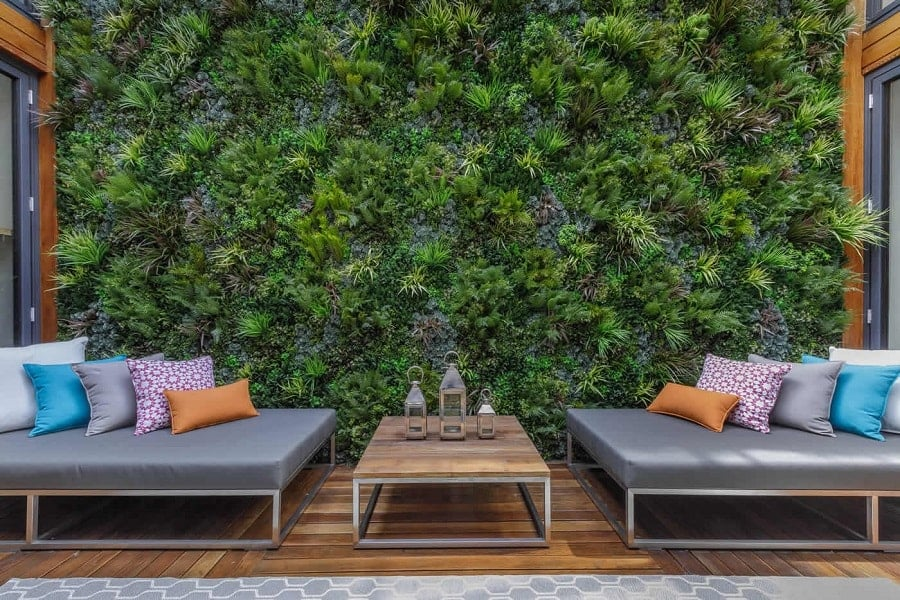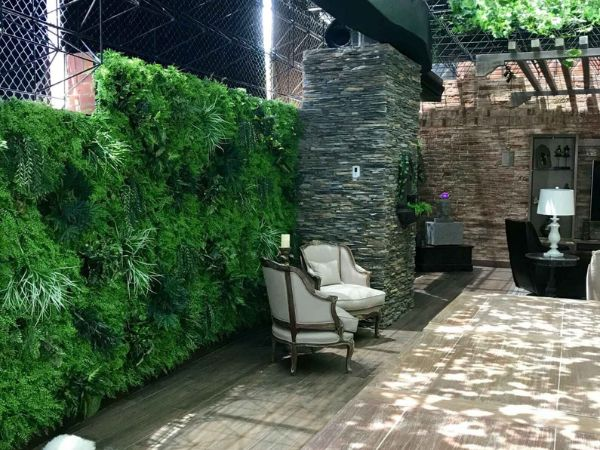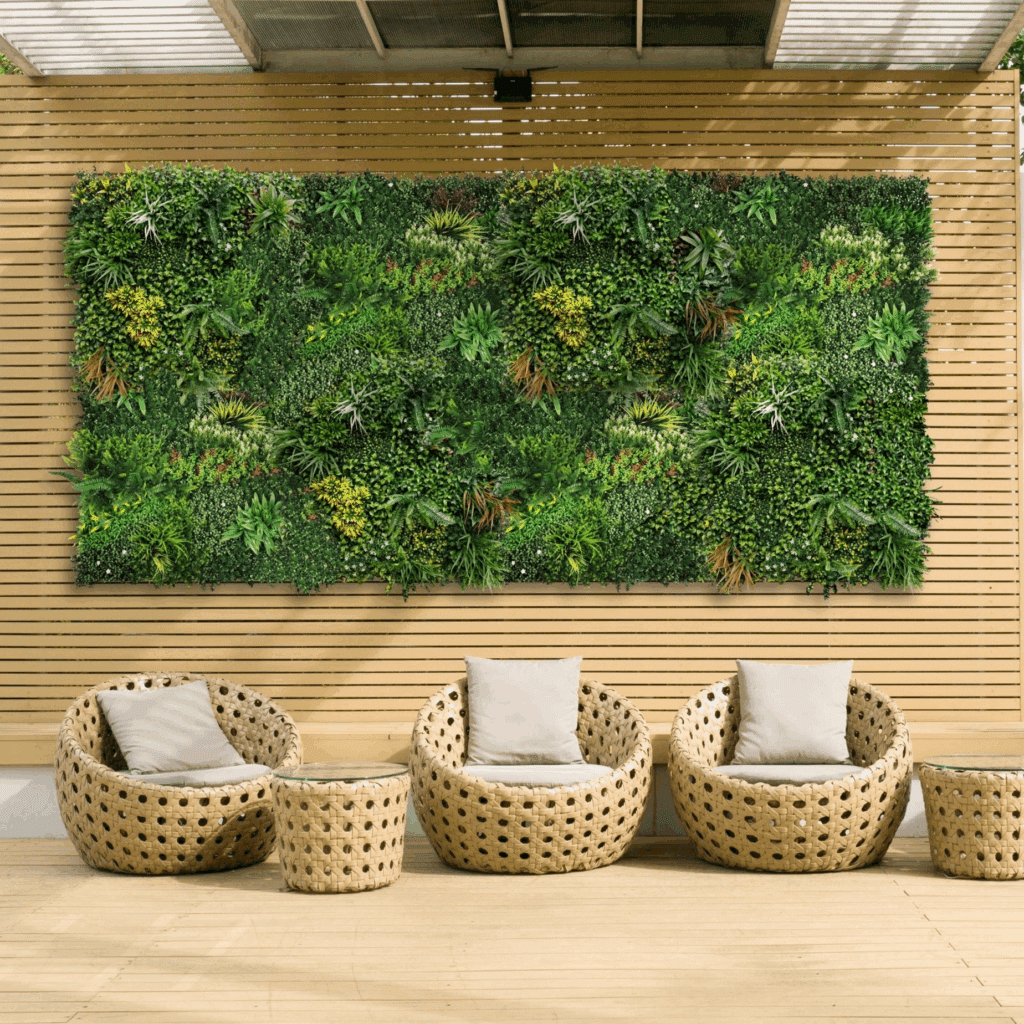Fake Plant Walls: Why They’re the Smart Choice for Modern Spaces
There’s something inherently appealing about greenery—it softens hard edges, adds life to sterile environments, and creates an immediate sense of calm. Yet for many of us, maintaining living plants feels like an impossible task. Between travel schedules, windowless offices, and the honest reality that not everyone has a green thumb, traditional plant care often becomes more burden than benefit.
Enter the fake plant wall: a design solution that’s shedding its outdated reputation and emerging as a legitimate, sophisticated option for residential and commercial spaces alike. Modern technology has transformed these installations from obvious imitations into convincing botanical displays that deliver all the aesthetic benefits of nature without any of the complications.
Breaking the Stigma: Why “Fake” Doesn’t Mean “Inferior”
Let’s address the elephant in the room—the word “fake” carries negative connotations. Yet in the context of interior design, artificial elements have long been accepted when they solve real problems. We don’t judge faux leather for being practical, or engineered stone for being durable. The same principle applies to plant walls.
A quality Fake plant wall serves a specific purpose: delivering the visual and psychological benefits of greenery in situations where living plants simply aren’t viable. This isn’t about deception; it’s about practical design that acknowledges real-world constraints while refusing to compromise on aesthetics.
The Practical Advantages You Can’t Ignore

Consistency and Reliability
Living walls are temperamental. They develop bare patches, require seasonal adjustments, and can suffer dramatic setbacks from climate control issues or maintenance oversights. Fake plant walls eliminate this variability entirely. What you install today looks identical months and years later, ensuring your design vision remains intact indefinitely.
No Infrastructure Requirements
Real living walls need complex support systems: waterproofing, irrigation with drainage, grow lights, and often specialized HVAC considerations to manage humidity. These requirements add substantial cost and complexity to any project. Artificial alternatives require nothing more than mounting hardware, dramatically simplifying installation and eliminating ongoing operational costs.
Perfect for Challenging Environments
Consider spaces where plants simply cannot thrive: basement fitness studios, interior hallways, heavily air-conditioned retail stores, or outdoor areas in extreme climates. Fake plant walls excel in precisely these challenging conditions, bringing greenery to spaces that would otherwise remain lifeless and sterile.
Health and Safety Benefits
Beyond aesthetics, artificial options eliminate several practical concerns. There’s no risk of mold growth from irrigation systems, no soil-borne pests, no potential for water damage, and no allergens for sensitive individuals. For healthcare facilities, schools, and food service environments, these considerations often make artificial installations the only responsible choice.
Design Versatility and Creative Applications
Transforming Commercial Spaces
Businesses across industries are discovering the value of fake plant walls for creating memorable environments. Office lobbies use them to make powerful first impressions without committing maintenance staff to ongoing plant care. Restaurants install them as Instagram-worthy backdrops that encourage social sharing while withstanding the temperature fluctuations and grease exposure that would destroy real plants.
Residential Innovation
Homeowners are getting creative with artificial greenery in ways that transcend traditional houseplants. Bedroom accent walls create spa-like retreats, balcony privacy screens add lush texture to urban settings, and bathroom installations bring nature into spaces where humidity and limited light make real plants problematic.
Event and Temporary Installations
The portability of modular fake plant wall systems makes them invaluable for temporary applications. Wedding planners create stunning backdrops that can be installed the day of an event, trade show exhibitors build attention-grabbing booths that pack flat for shipping, and pop-up retail stores establish immersive brand environments without the lead time living walls require.
Quality Markers: What Separates Premium from Poor

Material Construction
Superior fake plant walls use multi-layered construction with varied leaf sizes, textures, and subtle color variations that mimic natural growth. Budget options often feature uniform, flat foliage that immediately broadcasts its artificial nature. The investment in quality materials pays dividends in visual credibility.
UV and Weather Resistance
For outdoor applications or spaces with significant natural light exposure, UV stabilization is non-negotiable. Quality manufacturers incorporate UV inhibitors directly into the material composition, preventing the fading and degradation that causes cheap options to look dated within months.
Mounting Systems and Durability
Professional-grade installations use robust backing materials and secure mounting hardware designed for long-term stability. Flimsy panels that warp or sag not only look unprofessional but can create safety hazards in commercial settings.
Addressing Common Concerns
The Environmental Question
Some critics argue that artificial plants lack the environmental benefits of living alternatives. While fake plant walls don’t produce oxygen or filter air, this perspective overlooks the complete picture. Living walls in commercial settings often consume significant water, require synthetic fertilizers, and involve plant replacement that generates waste. When you factor in the elimination of ongoing resource consumption and the longevity of quality artificial installations, the environmental calculus becomes more nuanced.
Achieving Authenticity
The key to convincing fake plant walls lies in thoughtful design. Mix multiple species and textures rather than using uniform coverage. Incorporate depth by layering different foliage types at varied distances from the wall. Consider how natural light and shadows will interact with the installation. These considerations transform obvious replicas into sophisticated design elements.
Installation Considerations
Space Assessment
Before installation, evaluate your space’s specific needs. Consider viewing distances—areas seen primarily from several feet away can utilize more economical options, while close-viewing applications demand premium materials. Assess lighting conditions to determine whether accent lighting would enhance the installation’s realism and visual impact.
Professional vs. DIY Installation
Small-scale projects with modular panels lend themselves well to DIY installation using basic tools and wall-mounting hardware. Larger installations, particularly those incorporating custom designs or electrical elements, benefit from professional installation that ensures proper weight distribution, secure mounting, and polished finished edges.
Maintenance Planning
While dramatically simpler than living walls, fake plant walls aren’t entirely maintenance-free. Establish a simple quarterly cleaning schedule using compressed air, soft brushes, or vacuum attachments. For outdoor installations, plan for annual deep cleaning to remove accumulated environmental debris and maintain appearance.
FAQ Section
How realistic do modern fake plant walls actually look?
Today’s premium fake plant walls achieve remarkable realism through advanced manufacturing techniques. They feature botanically accurate leaf structures, natural color variation, and three-dimensional depth that convincingly mimics real foliage from typical viewing distances. While expert scrutiny may detect their artificial nature, most observers cannot distinguish quality installations from living walls in normal viewing contexts.
What’s the lifespan of a fake plant wall?
High-quality fake plant walls typically maintain their appearance for 7-10 years in indoor settings and 5-7 years outdoors when properly manufactured for exterior use. The primary factors affecting longevity are material quality and UV exposure. Premium options with proper UV protection resist fading and brittleness far longer than budget alternatives.
Can fake plant walls work in high-traffic commercial environments?
Absolutely. Fake plant walls are particularly well-suited to high-traffic areas because they withstand the consistent environmental stress that would damage living plants. They don’t shed leaves, don’t require access for maintenance that disrupts operations, and maintain consistent appearance regardless of foot traffic or environmental conditions.
Are there fire safety considerations for commercial installations?
Yes, commercial applications typically require materials that meet specific fire safety standards. Reputable manufacturers provide products with appropriate fire ratings and certification documentation. When specifying fake plant walls for commercial projects, always verify that materials comply with local building codes and insurance requirements.
How do fake plant walls compare in cost to living wall alternatives?
Initial costs for quality fake plant walls are often comparable to or slightly lower than living wall installations. However, the total cost of ownership dramatically favors artificial options when you factor in eliminated expenses: irrigation systems, drainage infrastructure, grow lights, ongoing plant replacement, professional maintenance contracts, water consumption, and potential water damage repairs. Over a 5-10 year period, fake plant walls typically cost 60-80% less than maintaining living alternatives.
Conclusion
The conversation around fake plant walls has matured significantly. Rather than dismissing them as inferior substitutes, forward-thinking designers and property owners recognize them as legitimate solutions that solve real problems while delivering genuine aesthetic value.
Whether you’re designing a corporate space that demands reliability, a residential area that lacks suitable growing conditions, or a commercial environment where maintenance practicality matters, fake plant walls offer a path to incorporating nature’s beauty without compromise. The technology has evolved to the point where quality installations genuinely enhance rather than detract from sophisticated design—making them worthy of serious consideration for any project seeking the benefits of greenery without the burden of maintenance.
The key is approaching them with the same design thoughtfulness you’d apply to any architectural element, investing in quality materials, and recognizing them for what they are: practical, beautiful solutions for bringing nature into the modern built environment.

